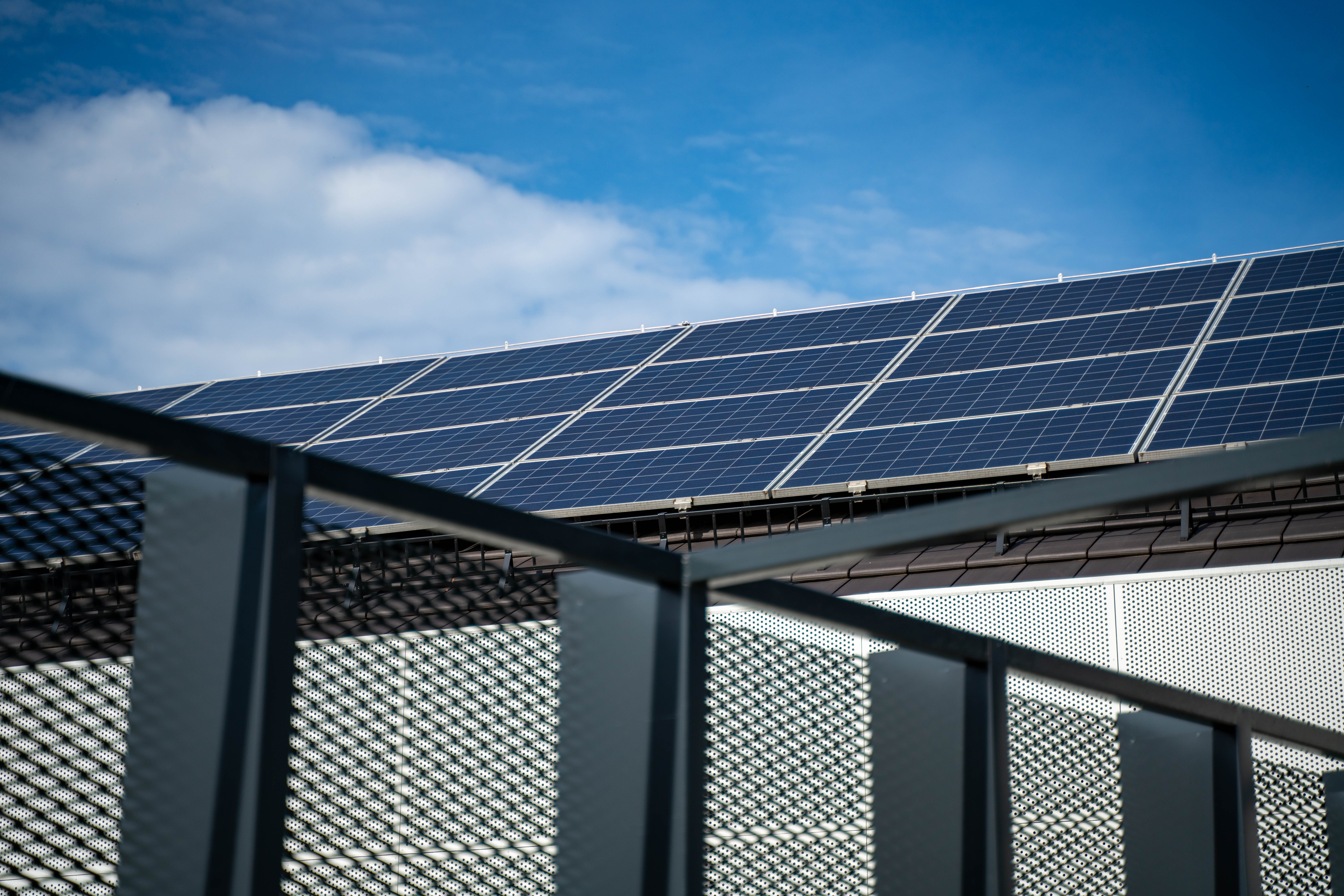Introduction
As global energy codes become increasingly stringent, architects must prepare for a wide range of challenges.
The first step is to understand the key metrics to perform early-stage analysis and collaborate with various disciplines.
With buildings accounting for 39% of global carbon emissions, the design industry is shifting toward data-driven energy integration.
This transformation positions architects as building performance experts, creating spaces that are not only highly efficient but also beneficial for occupant health.
Here are 5 essential metrics in sustainable building design that every architect should know.
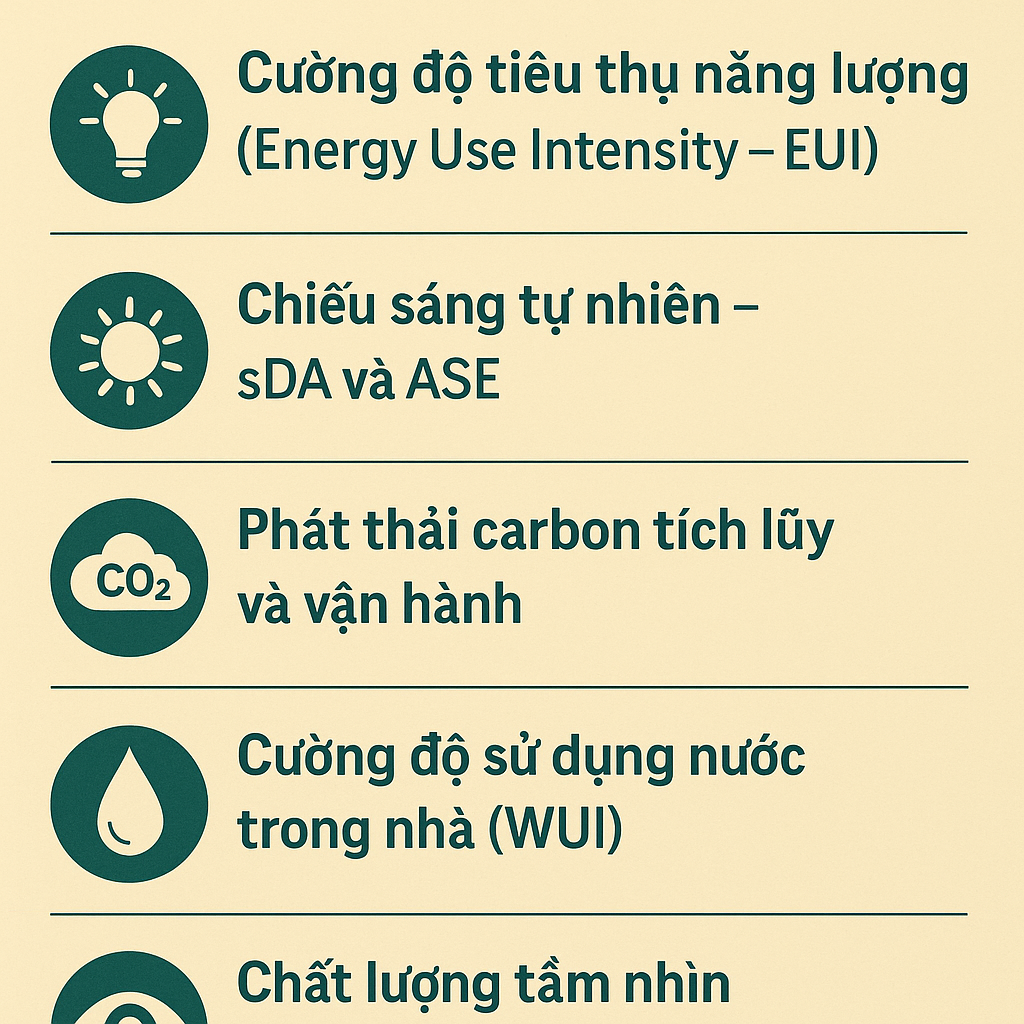
1. Energy Use Intensity (EUI - kBtu/ft²/year)
EUI refers to the amount of energy required to operate a building once it's in use.
An integrated design can reduce operational and maintenance costs, while improving indoor air quality, thermal comfort, and natural daylight access.
When performing energy simulations, it's important to understand how each design decision impacts EUI.
Factors like building envelope, window-to-wall ratio, passive and active strategies, HVAC loads, etc., significantly affect costs.
EUI is calculated as total annual energy consumption divided by floor area, in kBtu/ft²/year.
Understanding and predicting EUI helps estimate annual energy costs. Main components include: heating, cooling, lighting, equipment, fans, pumps, and hot water.
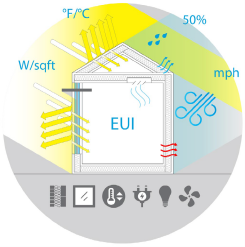
2. Daylighting – sDA and ASE
sDA (Spatial Daylight Autonomy): the percentage of floor area receiving at least 300 lux for at least 50% of the annual working hours (8 am - 6 pm), measured at a work plane 76 cm above the floor.
ASE (Annual Solar Exposure): the percentage of floor area receiving more than 1000 lux of direct sunlight for at least 250 hours/year — which may cause glare and increased cooling loads.
Effective daylighting design involves form, materials, surface colors (ceilings, walls, floors), and shading devices such as overhangs, louvers, light shelves, as well as surrounding elements like nearby buildings or trees.
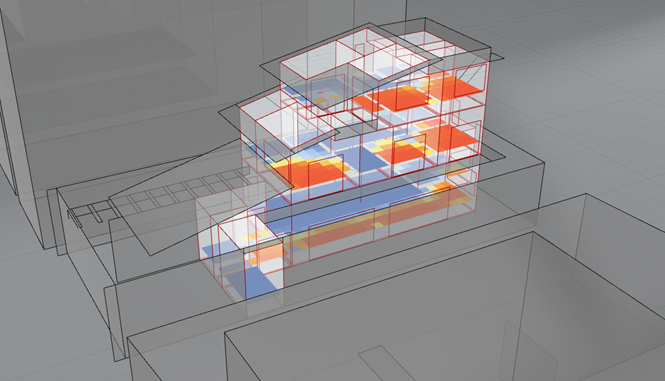
3. Embodied and Operational Carbon Emissions (tons CO2e/year)
Embodied Carbon: GHG emissions from the entire lifecycle of materials — extraction, manufacturing, transport, installation, replacement, demolition, and end-of-life processing.
Operational Carbon: GHG emissions during building use — including operation, maintenance, and energy use for HVAC, lighting, etc.
Up to 80% of embodied carbon can be reduced when assessed early in design.
We cannot meet the Paris Agreement goals without reducing building emissions.
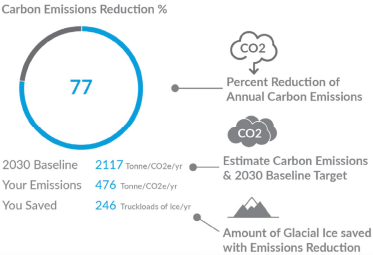
4. Indoor Water Use Intensity (WUI - gal/ft²/year)
WUI indicates the annual amount of potable water consumed per square foot.
Efficient water system design is crucial, as potable water use accounts for a significant portion of global freshwater resources.
Solutions include:
-
Roof rainwater harvesting
-
Reuse of wastewater and gray-water
-
High-efficiency plumbing fixtures (LEED WaterSense standard)
-
Strategies for stormwater infiltration and groundwater recharge.
WUI is estimated based on baseline and target values for 5 common water fixtures, multiplied by building area to determine preliminary WUI and potential reductions.
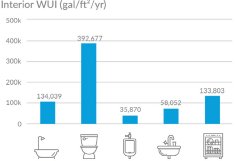
5. Quality Views (% of areas with quality views)
Assesses the ability to provide beneficial views to the outside for building occupants.
Design considerations include:
-
Building orientation
-
Site planning
-
Façade design
-
Interior layout
Occupants with access to nature views report higher satisfaction, focus, and productivity. In healthcare, views of nature shorten recovery times and reduce stress, depression, and pain medication needs.Views to the outside also support natural circadian rhythms — disruption can cause long-term health issues, including mental disorders.
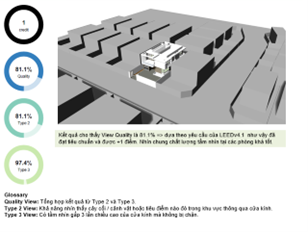
Conclusion
Understanding and applying the 5 key sustainable design metrics — EUI, sDA & ASE, carbon emissions, WUI, and quality views — enables architects to create high-performance, environmentally friendly buildings that also support occupant health and comfort.
Tags
Related news

10 Innovative Ways to Use IAQ Data for Healthy Buildings
Closing the Gap Between Data and Action For forward-thinking organizations, improving Indoor Air Quality (IAQ) is a strategic priority. IAQ...
View detail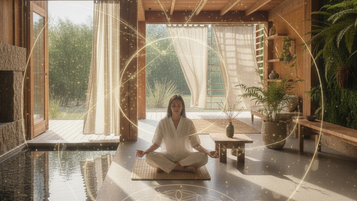
Designing the Mindful Home: From Matter to Energy
A mindful home is not merely a place to live — it is a conscious space, where every line, material,...
View detail
Body – Mind – Qi: The Foundation of Healing Architecture
The home is not only a shelter for the body but also a space that nurtures the soul and life...
View detail
